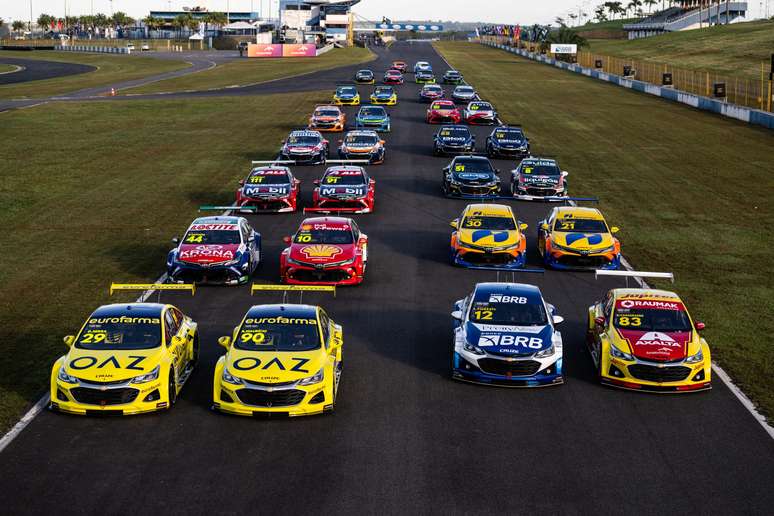Hankook tires are new for the 2023 Stock Car season. Cesar Ramos and Daniel Serra talk about the changes compared to Pirelli
In the Vicar world, which includes Stock Car Pro, Stock Series and F4 Brasil, Pirelli left the scene at the end of 2022 and Hankook entered the game. Despite being little known to the general public, Korean tires are not new to motorsport: before arriving in stock, Hankook compounds have already equipped cars in the 24H Series, TCR Italia, Trofeo Lamborghini and even the DTM. (We cover all about supplying tires to categories in this article)
But what about the Stock cars, how do they behave? With two passes completed, initial impressions are already more established. Parabólica was present at the Stock Car weekend in Interlagos and took the opportunity to ask who can best answer this question: the drivers.
“Good Surprise”
Most of the drivers’ first contact with Hankook tires came at the opening stage of the season, in Goiânia. Before that, little was known about the new compounds was that they were a stiffer material than the old Pirellis. There was, to some extent, concerns that the tires might lack grip, which would have a negative impact on the performance of the cars as a whole.
In practice this was not the case. In Goiânia the times in qualifying were very close to those obtained with the old compounds: “In fact, the tires were a nice surprise”. The statement came from three-time champion Daniel Serra, of Eurofarma RC. “We expected to have a little less grip than he actually has. It’s a tire that works a little differently than the Pirelli, its casing is a little stiffer, it works a little less, but it was a good tyre”.
On the same line Cesar Ramos, of Ipiranga Racing, holder of a victory and 5 pole positions in the category: “We didn’t really know what to expect at the beginning, but it’s a tire that actually surprises us positively”.
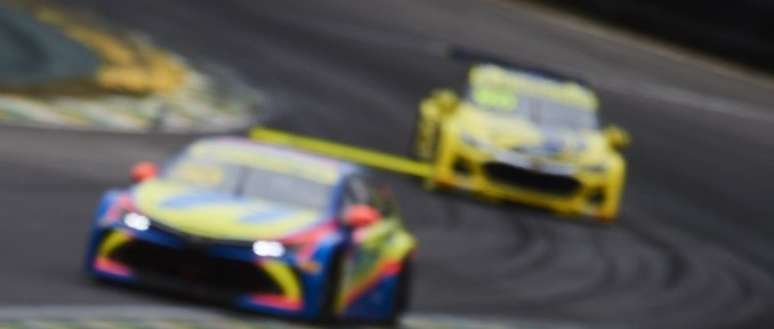
Change in driving style
While the differences between new and old tires aren’t obvious, they do exist. And even the touch of Stock changes thanks to the new level of grip. The secret is in the details, such as the force applied to the brakes, the moment to accelerate and the way to approach certain corners. In the words of Cesar Ramos:
“With the Pirelli rubber I felt a little more support, especially in long-radius corners. Suddenly being able to release my foot off the brake earlier, carrying a little more speed, which is more my style. And with these tires we have to drive more in a V, that is, it brakes very well, it has a lot of grip under braking, but you have to stop the car more and then try to go out hard, because it has a lot of resistance in the middle because it lacks this lateral support.
You lose on one side, you gain on the other
The harder characteristic of the Hankook tires compared to the Pirellis has a negative impact in certain respects: “The Pirellis had a little more performance in the standings, for example. For a fast lap, I think it had a little more grip, a little more grip,” says Cesar Ramos.
If there is a perception of less grip, there is also less wear: “We can work more on the car with the tires [Hankook] more expenses because, even if it wears out, it is more constant instead of having very consistent drops”, analyzes the Ipiranga rider, who conquered a podium in the Interlagos stage.
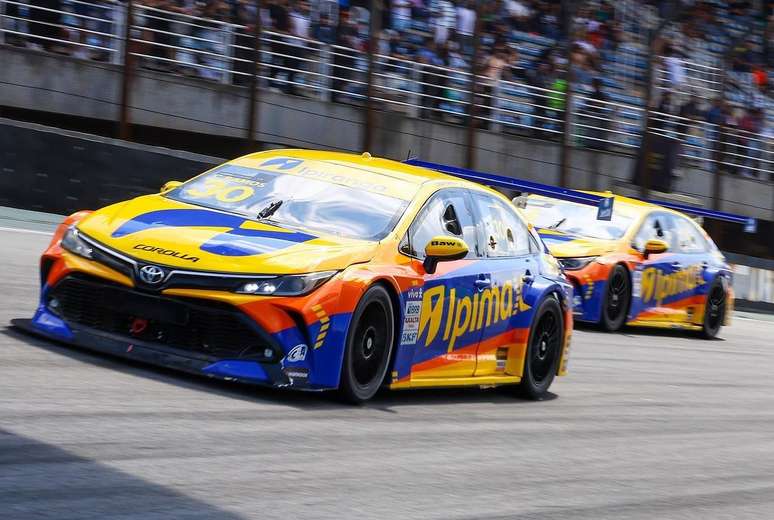
Betting on Race 2 could be riskier
The current Stock Car format has two races per stage. It works like this: the classification is carried out in order to define the starting grid for race 1. At the end of this first race, the first 10 reverse their positions and the start of race 2 begins.
In recent years it has become common to see riders sacrifice Race 1 to start Race 2 with a new set of tires and a fuller tank. With this, they were able to take advantage of the difference in tire conditions compared to those who remained on the track, thus climbing the group with relative ease.
Now, with less wear, those with worn tires tend to defend themselves better, as Cesar explains: “I think that, with this tyre, there will be a little less, given that there is the initial decline and it becomes more constant, the loss of performance is not so great”.
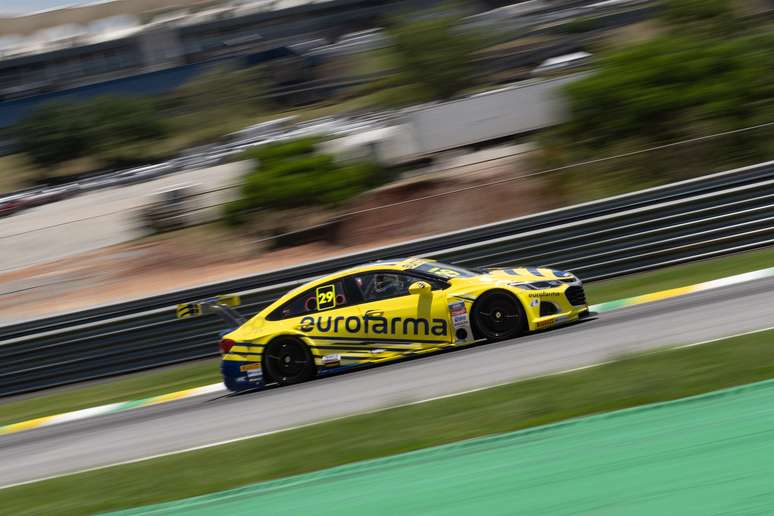
learning stage
Although they have a good idea of how the new tires behave and what has changed compared to the previous ones, the drivers are unanimous: there is still a lack of data for a more complete understanding of how the new compounds work. And there’s no secret: you’ll only get there by testing in practice.
“We just learn with mileage, and a Stock Car weekend’s mileage is low, so we need a few weekends to really understand, understand under different conditions,” explains Daniel Serra. “It was very hot here in Goiânia [em Interlagos] it’s a little colder, we have to have a stadium even colder than this, so it’s a little more difficult to understand. We need a little more mileage.
Cesar Ramos goes along the same lines, reinforcing the importance of understanding the tires to improve performance: “We’re still learning a lot with him,” he reveals. “At each stage we will try to understand better, because it is one of the most important parts of the car. Working the rubber well is where you will extract the best performance from the car”.
The Ipiranga rider also spoke about how his adaptation to the tires has been: “I, in particular, am still learning a lot and I hope there is a better understanding at each stage to be more and more competitive,” he says. “I still don’t feel 100% comfortable. I still don’t understand exactly how much I should warm up, whether it is better to do one thing or another. I’m in a learning phase about this.”
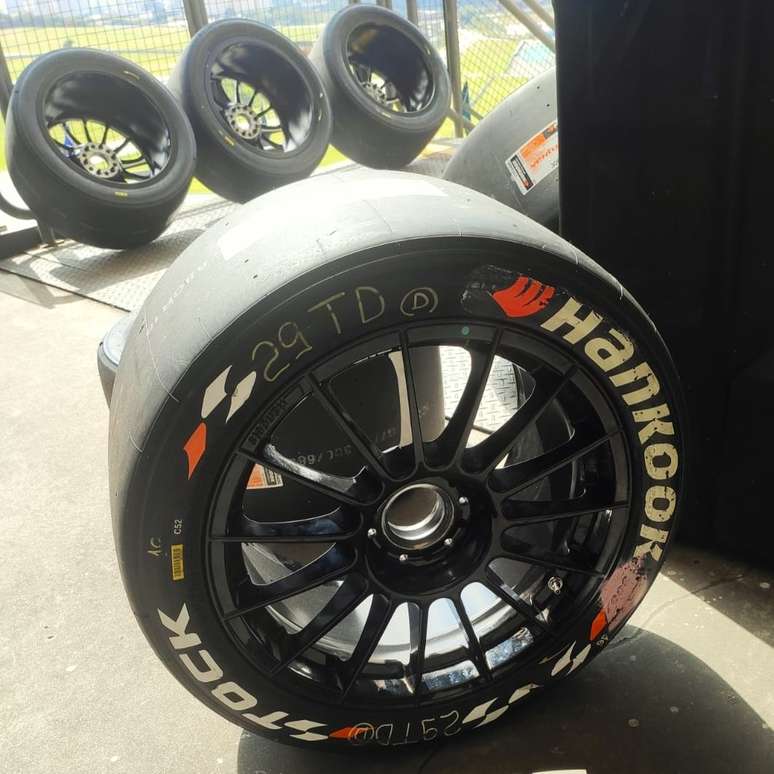
equal conditions
More resistant tires and less grip, adjustments in driving style, adaptation strategies, data collection. These are the difficulties and challenges imposed on all Stock Car drivers for 2023. Sooner or later, preferences and methods aside, everyone will fully adapt to the new condition.
Daniel Serra, from his experience, accurately summarizes the change of supplier and the challenges it entails: “In the end, it doesn’t change much. It’s the same for everyone. Good or bad, everyone uses the same thing.”
In Serra’s own words, the Interlagos stage ended up “going badly” for him. The Eurofarma driver had his participation compromised precisely because of a flat tyre. He stuff from engines …
Editor’s Note: It’s possible that the flat tire on Daniel Serra’s car is the exact unit pictured above. If so, I’m in front of any conspirator: I have nothing to do with it! I’ve just done my duty to record a tire aptly photographed in the corner of the paddock while trying to understand the subject…
Source: Terra
Rose James is a Gossipify movie and series reviewer known for her in-depth analysis and unique perspective on the latest releases. With a background in film studies, she provides engaging and informative reviews, and keeps readers up to date with industry trends and emerging talents.

